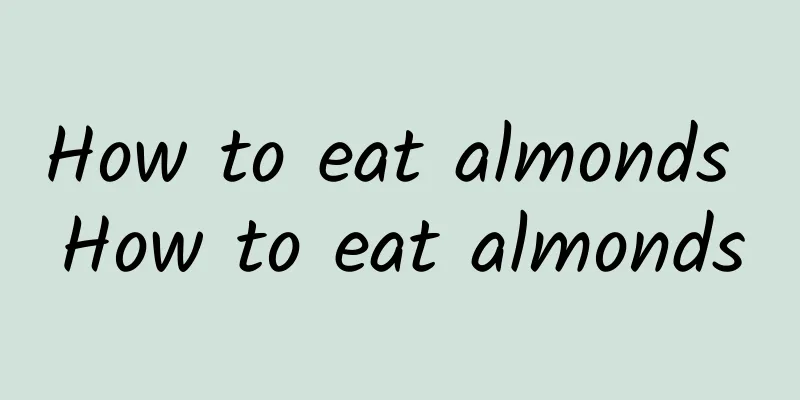Nutritional value of kumquat

|
Many people like to eat kumquats. Now it is autumn and winter, which is the season when kumquats are on the market. Let’s take a look. Nutritional value of kumquatKumquat not only contains a variety of vitamins and carbohydrates, but also has the highest nutritional value among citrus fruits, and is a favorite fruit for people. Kumquat also has anti-inflammatory, expectorant, anti-ulcer, digestion-promoting, blood pressure-lowering, heart-strengthening, and cough-relieving effects, and has a significant therapeutic effect on bronchitis. Kumquat is not only beautiful, but its fruit is rich in vitamin C, kumquat glycosides and other ingredients, which have a certain effect on maintaining cardiovascular function and preventing diseases such as vascular sclerosis and hypertension. As a dietary health product, kumquat candied fruit can stimulate appetite, kumquat juice can quench thirst, and adding radish juice and pear juice can cure cough. Kumquat has a sweet and warm nature, and can regulate qi, relieve depression, and resolve phlegm. Its medicinal methods include: for treating chronic bronchitis, use kumquat and rock sugar to stew in water. For treating indigestion, use kumquat, scorched malt, and scorched hawthorn to decoct in water. For treating chronic hepatitis, kumquat and Scutellaria barbata can be boiled into a thick juice and taken with sugar. For cold stomach pain, kumquat and Evodia rutaecarpa can be decocted in water. Using kumquat, Patchouli, and ginger together to treat cold nausea, and using kumquat and Codonopsis pilosula decoction instead of tea can stabilize the fetus. Kumquats are rich in vitamin A, which can prevent pigmentation, increase skin luster and elasticity, slow down aging, and prevent skin sagging and wrinkling. They can also prevent civilization diseases such as vascular disease and cancer, and can regulate qi and relieve cough, strengthen the stomach, reduce phlegm, and prevent asthma and bronchitis. Kumquats also contain vitamin P, which is an important nutrient for maintaining blood vessel health. It can strengthen the elasticity of microvessels and can be used as an auxiliary conditioning food for hypertension, vascular sclerosis, and heart disease. Effects of Kumquat:Regulates Qi, relieves depression, resolves phlegm, quenches thirst, helps digestion, and sobers up. Kumquat can enhance the body's resistance to cold, prevent colds, and lower blood lipids. It is suitable for people with chest tightness, loss of appetite, or fullness, drunkenness and thirst; suitable for people with acute and chronic tracheitis, hepatitis, cholecystitis, hypertension, and sclerosis of the rectum. People with weak spleen and qi should not eat too much, and diabetics should avoid eating it. People with mouth and tongue pain and swollen gums should avoid eating it. Kumquat is not only beautiful, but its fruit is rich in vitamin C, kumquat glycosides and other ingredients, which have a certain effect on maintaining cardiovascular function and preventing diseases such as vascular sclerosis and hypertension. As a dietary health product, kumquat candied fruit can stimulate appetite, kumquat juice can quench thirst, and adding radish juice and pear juice can cure cough. Kumquat has a sweet and warm nature, and can regulate qi, relieve depression, and resolve phlegm. Its medicinal methods include: for treating chronic bronchitis, use kumquat and rock sugar to stew in water. For treating indigestion, use kumquat, scorched malt, and scorched hawthorn to decoct in water. For treating chronic hepatitis, kumquat and Scutellaria barbata can be boiled into a thick juice and taken with sugar. For cold stomach pain, kumquat and Evodia rutaecarpa can be decocted in water. Using kumquat, Patchouli, and ginger together to treat cold nausea, and using kumquat and Codonopsis pilosula decoction instead of tea can stabilize the fetus.The role of kumquat:Kumquats are rich in vitamin A, which can prevent pigmentation, increase skin luster and elasticity, slow down aging, and prevent skin sagging and wrinkling. They can also prevent civilization diseases such as vascular disease and cancer, and can regulate qi and relieve cough, strengthen the stomach, reduce phlegm, and prevent asthma and bronchitis. Kumquats also contain vitamin P, which is an important nutrient for maintaining blood vessel health. It can strengthen the elasticity of microvessels and can be used as an auxiliary conditioning food for hypertension, vascular sclerosis, and heart disease. 80% of the vitamin C in kumquat is stored in the peel, which is very effective in detoxifying the liver, caring for the eyes, and supporting the immune system. The peel of kumquat is also sweeter than the flesh. Taboo: Do not drink milk one hour before or after eating kumquats, because the protein in milk will coagulate when it encounters the fruit acid in kumquats, making it difficult to digest and absorb, and will cause abdominal bloating and discomfort; it is also not advisable to eat too many kumquats before meals or on an empty stomach, because the organic acids they contain will irritate the gastric mucosa and cause stomach discomfort; when you have a sore throat, itchy throat, or cough, you should not add sugar when drinking kumquat tea, as too much sugar will easily produce phlegm.Kumquat The characteristic of kumquat is that the peel and the flesh are eaten together. After chewing, you will feel the throat moist and the mouth full of fragrance. 80% of the vitamin C in kumquat is concentrated in the peel, up to 200 mg per 100 grams. In addition to being eaten fresh, kumquat can also be brewed into tea. One of the major uses is to process it into white sugar kumquat cakes, licorice kumquat cakes, jams, orange peel wine, kumquat juice, etc. Aromatic oil can also be extracted from the peel. Kumquat has high medicinal value. |
<<: The efficacy and function of kumquat
Recommend
Eggplant planting tips and precautions for eggplant cultivation
What issues do we need to pay attention to when g...
How to make watermelon juice? Steps to make watermelon juice
I heard that drinking watermelon juice regularly ...
What calcium tablets are good for the elderly? How about Diqiao calcium tablets?
When people enter old age, their body metabolism ...
What is the Portuguese Football Association like? Portuguese Football Association reviews and website information
What is the website of the Portuguese Football Ass...
What is Air France like? Air France reviews and website information
What is Air France? Air France is a French state-o...
Where is the dish of braised lion head
Everyone has eaten braised lion's head, right...
How to consume grape seed oil How to consume grape seed oil
Grapeseed oil is a high-grade edible oil. It is a...
How is the Nursing Company? Nursing Company Reviews and Website Information
What is Protective Life? Protective Life is a well...
Can pregnant women eat mangosteen?
Can pregnant women eat mangosteen? I believe that...
What should not be eaten with preserved eggs? Taboos of eating preserved eggs
Preserved eggs, also known as Songhua eggs, are a...
Variegated leopard flower cultivation methods and precautions
Variegated leopard flower is the most popular orn...
Artemisia capillaris porridge
What I am going to introduce to you below is the ...
Can the core of jackfruit be eaten? How to eat the core of jackfruit
Jackfruit is a delicious, fleshy fruit that is mo...
What is Kalo & Associates like? Kalo & Associates reviews and website information
What is Kalo & Associates? Kalo & Associat...
How to make banana pancakes Ingredients and steps for making banana pancakes
Banana is a fruit that can be eaten directly. It ...









